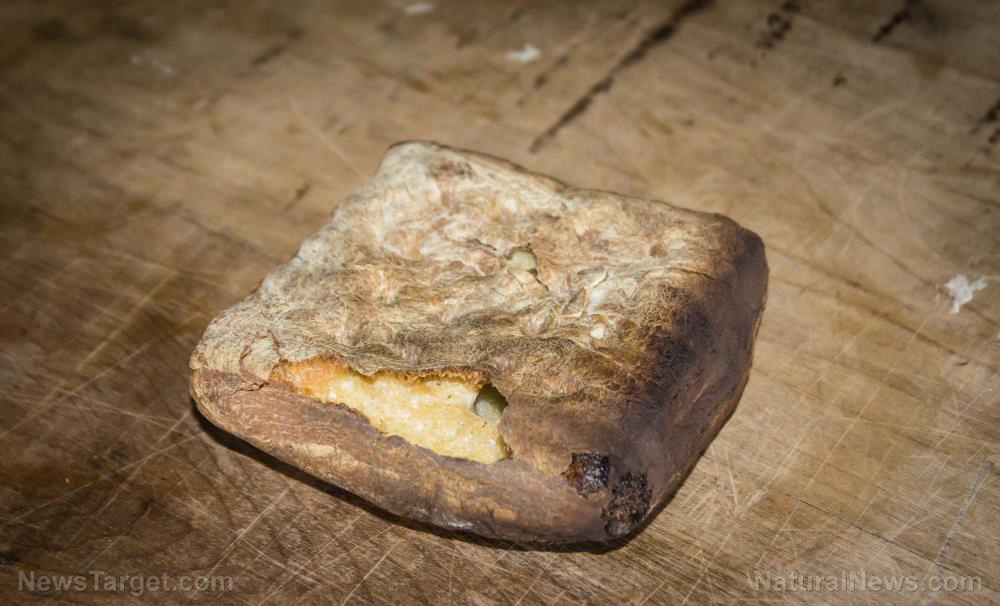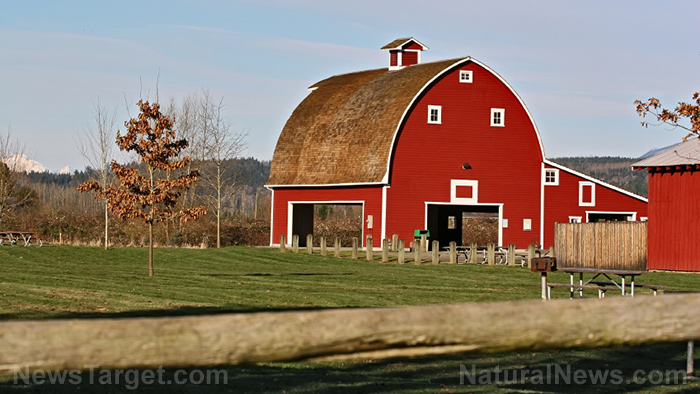Coronavirus cripples food supply chains: Farmers now forced to dump fresh produce as stores run out of food
05/13/2020 / By Zoey Sky

The coronavirus (COVID-19) pandemic continues to upend lives throughout America: Now, farmers are being forced to dispose of their crops, even as grocery stores run out of foods to sell to worried shoppers.
The global pandemic has also caused Americans to seek aid from food banks in shocking numbers, many of whom have lost their jobs amid the onslaught. It’s also caused humanitarian leaders to express concern about a looming “global starvation pandemic.”
Where did we go wrong?
Many factors have caused this scenario, experts say, including a significant drop in demand, a very consolidated supply chain and long-term industry monopolies.
“A large portion of our food is now produced for restaurants, hotels, schools, and institutional users, about 50 percent. Those markets have effectively closed up, and there is not enough demand for home use now,” explained Dan Glickman, executive director of the Aspen Institute and former U.S. Secretary of Agriculture, in an interview with Fox News. “Nor is the supply chain set up for this rapid transformation.”
Glickman continued that while the move toward making food processing a centralized process has been a general trend in recent years, mainly because of efficiency and cost-cutting, the coronavirus pandemic showed a major weakness.
“We no longer have a decentralized food production process, at least not to the extent of 30 years ago,” he added. “But we now see how it is impacted by a single event like COVID-19, where workers have been so impacted.”
Food waste and lost revenue
“Before the pandemic, U.S. consumers purchased about a third of their calories and spent over half of their food dollars on food consumed outside of their home – restaurants, fast food, schools, work cafeterias, etc.,” said Dr. Douglas Jackson-Smith of Ohio State University’s School of Environment and Natural Resources. He noted that store closures and stay-at-home orders have changed where most Americans purchase and consume their food.
“Supply chains have been slow to reorganize and respond,” he added.
With supply chains ground to a halt, food producers are taking most of the brunt. According to the United Fresh Produce Association, its members are losing out on up to $1 billion per week.
Jackson-Smith also added that most of the food supply chain was designed to supply commercial and retail foodservice outlets. This makes it difficult for them to adjust their production practices and distribution systems within only a few weeks. Farmers noted that they find it easier to kill their animals and destroy crops than to let their livestock and plants rot away as summer nears.
The irony isn’t lost on food banks. Feeding America, the nation’s largest food bank, reported a 70 percent increase in demand, as the coronavirus pandemic led to record levels of unemployment among millions of Americans.
Keiko Tanaka, a professor of rural sociology at the University of Kentucky, said large-scale commercial consumption, which accounts for over 50 percent of spending, has almost been entirely lost due to the pandemic.
Addressing the sudden demand change isn’t simple. To illustrate, milk processors lack the necessary equipment to package excess milk into smaller containers for grocery stores and retail use, especially since there are also a lot of cheese and other dairy products with longer shelf lives.
Tanaka and her fellow researchers added that like fruit and vegetable farmers, dairy farmers are forced to dump excess milk. Simply put, it is hard to divert the food supplies for commercial use to household use due to decreasing prices, labor shortages and mismatches in both equipment and facilities. (Related: America’s food system in shambles in the wake of the coronavirus pandemic.)
Last April, the biggest meat companies in the U.S. – Cargill Inc., JBS USA, Smithfield Foods and Tyson Foods – had to suspend production at around 20 slaughterhouses nationwide, resulting in concerns of a potential mass meat shortage. In response, the Trump administration invoked the Defense Production Act to keep processing facilities open despite the pandemic.
However, Jackson-Smith explained that these plants can only stay open if they have a labor force to rely on.
Meatpacking plants employ one of the more vulnerable workforces in the food sector. With the consolidation of the meat processing sector, the loss of some very large processing sites could affect the majority of America’s meat supply.
According to a New York Times article, out of 800 USDA inspected slaughterhouses in the U.S., only 50 factories slaughter and process 98 percent of the beef. Most of these facilities are owned and operated by the four big meat companies.
Changes must be made to concentrated food supply chains
The coronavirus outbreaks at food processing facilities confirm that food processing is a huge bottleneck in the U.S. food system. Standard regulations for food safety and health don’t always work in favor of small- and medium-scale processors and mom-and-pop retailers.
To help relieve the strain on the agricultural sector, the Trump administration announced the Coronavirus Food Assistance Program in April, which issued $16 million in payments to ranchers and farmers. Additionally, it allocated $3 billion in bulk purchases of dairy, meat and produce that would be distributed via food banks.
Many appreciate the federal aid, but some are worried that it will take more than this to help food producers recover from the pandemic.
The American Farm Bureau Federation, the leading farmer trade group, said that the aid package won’t cover livestock that is winnowed. In a statement to Reuters, the USDA reported that the payment program “is still being developed, and the agency has received more requests for assistance than it has money to handle.”
The relief may also take a while to roll out. Officials suggest that it may take at least one month for food to be packaged and redirected to foundations, food banks and other places in need of aid.
Experts have several recommendations to prevent far-reaching disruptions to the U.S. food economy in the future.
Tanaka and her team suggest that the country start moving away from concentrated food supply chains. They believe that more regional supply chains can adapt. To ensure that food products are rechanneled when a segment of the food supply chain breaks, diverse sizes and types of farms, processing plants and distributors should be made part of every regional supply chain.
Others warn that significant changes are also associated with certain financial concerns.
Vincent Smith, a professor in agricultural economics at Montana State University, explained that the main dilemma that needs to be addressed is the reforms that may cost more than the food waste being produced. Smith posited that it may better to let a farmer dispose of milk and compensate that farmer, but not all dairy farmers, for any losses.
Because of this short-term crisis, Smith concluded that the best course of action may be to offer food aid cash transfers to the households needing help and letting the private market respond to the pandemic in their own ways.
Sources include:
Tagged Under: Collapse, coronavirus, covid-19, distributors, farming, farms, food, food banks, food supply, government, groceries, grocers, harvest, infections, meat processing, outbreak, pandemic, restaurants, starvation, superbugs, Supply, supply and demand, supply chain, survival, virus
RECENT NEWS & ARTICLES
COPYRIGHT © 2017 FOOD SUPPLY NEWS





















